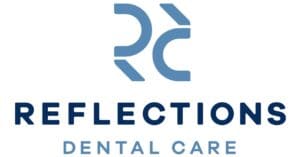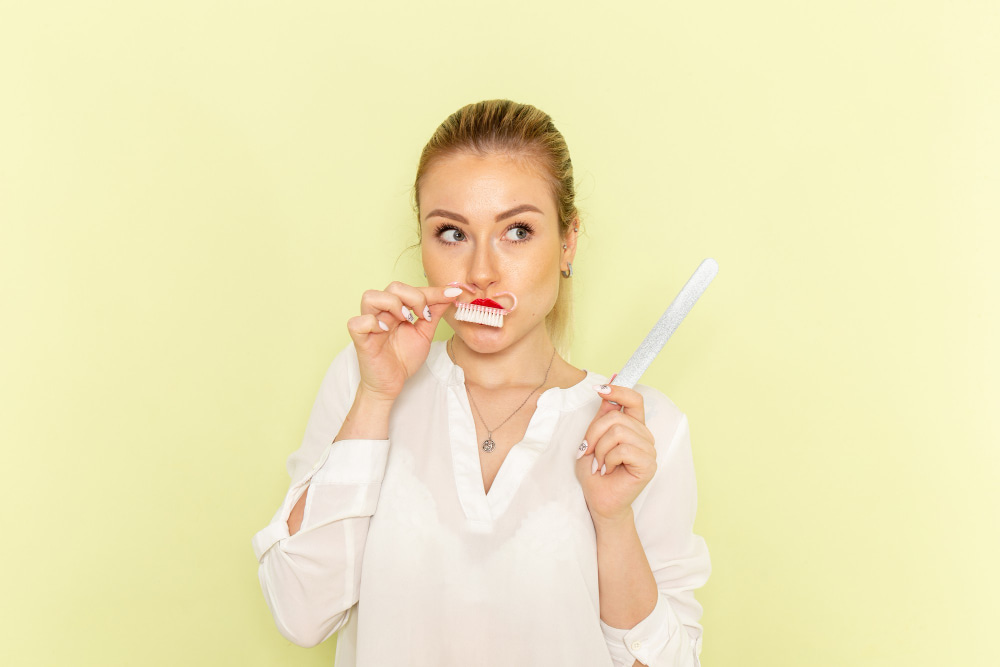Biofilms are often referred to as plaque in the oral cavity. A biofilm is the colonization of a lot of bacteria. The formation of a biofilm is an irreversible process. It is essential to physically remove the biofilm before infection occurs because the bacterial cells within the biofilm are highly resistant to antibiotics and host defenses. While brushing and flossing can remove food debris and bacteria, they are not effective in removing plaque. This is why it is important to visit your hygienist, at least, every six months.
Understanding the process of biofilm formation offers an opportunity for researchers to find ways to stop the formation of biofilms before they develop and cause infections such as cavities, periodontitis, or gingivitis. There are several things that affect the formation of a biofilm within the oral cavity. Things such as the environment, bacterial properties, and material surface characteristics play a huge role in creating ideal conditions for the formation of a biofilm. While the majority of this review will focus on the latter, it is essential to first understand the process of biofilm formation.
The only way for bacteria to survive the harsh environment of the mouth is to adhere to a surface. Adhesion occurs in four separate steps. First, the bacteria must be transported to the surface. Next, an initial reversible adhesion must occur. Next, the bacteria attach by specific interactions. They form an anchorage of bacteria, a first layer, through direct contact or bridging. This first layer of bacteria works the hardest to adhere to the surface. After the first layer of bacteria is established, the last step of biofilm formation is colonization. The bacteria interact in order to make themselves stronger. Once the bacteria do the hard work of establishing the first layer, it becomes increasingly easier for more bacteria to grow and build a plaque layer. Without sufficient removal forces such as swallowing, friction by tongue orbiting, and oral hygiene implements, to overcome the retention forces of the bacteria, the plaque is able to cause oral disease.
Sources:
Sakaguchi, Ronald L., John M. Powers, and Robert G. Craig. Craig’s
Restorative Dental Materials. Philadelphia: Elsevier Mosby, 2012\. Print.
Song, F., H. Koo, and D. Ren. “Effects of Material Properties on Bacterial Adhesion and Biofilm Formation.” Journal of Dental Research 94.8 (2015): 1027-034\. Web.
Almaguer-Flores, A., R. Olivares-Navarrete, M. Wieland, L. A. Ximénez-
Fyvie, Z. Schwartz, and B. D. Boyan. “Influence of topography and hydrophilicity on initial oral biofilm formation on microstructured titanium surfaces in vitro.” Clinical Oral Implants Research 23.3 (2011): 301-07\. Web.
Quirynen, M., and C. M. L. Bollen. “The influence of surface roughness and surface-free energy on supra- and subgingival plaque formation in man.” Journal of Clinical Periodontology 22.1 (2005): 1-14. Web.
Dijk, Johan, Frank Herkstroter, Henk Busscher, Anton Weerkamp, Henk Jansen, and Joop Arends. “Surface-free energy and bacterial adhesion. An in vivo study in beagle dogs.” Journal of Clinical Periodontology 14.5 (1987): 300-04\. Web.
Teughels, Wim, Nele Van Assche, Isabelle Sliepen, and Marc Quirynen. “Effect of material characteristics and/or surface topography on biofilm development.” Clinical Oral Implants Research 17.S2 (2006): 68-81. Web.
Hannig, Christian, and Matthias Hannig. “The oral cavity—a key system to understand substratum-dependent bioadhesion on solid surfaces in man.” Clinical Oral Investigations 13.2 (2009): 123-39\. Web.
Understanding Plaque and How It Happens!
Take control of plaque buildup with professional care at Reflections Dental Care. Our team is here to help you maintain a healthy, clean smile. Call us today at (405) 751-4556 to schedule your appointment!

